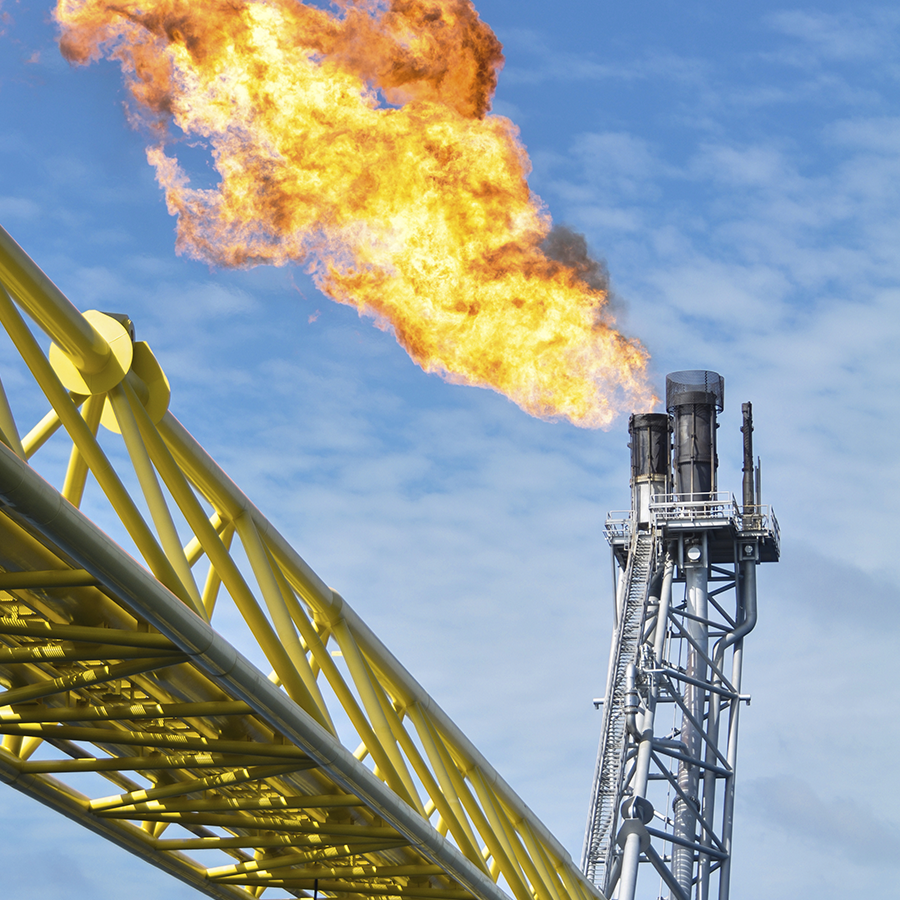In line with policies to curb flaring of natural gas in refineries, the first flaring torch at the first South Pars Refinery in the city of Asalouyeh, Bushehr Province, was shut down on Wednesday.
The ceremony was attended by Mahdi Yousefi, managing director of Pars Special Economic Energy Zone, Massoumeh Ebtekar, the head of Department of Environment as well as Massoud Hassani, director of South Pars Gas Complex, Shana reported.
"The amount of associated petroleum gases (APG) in the first 10 phases of the giant gas field in the Persian Gulf has been curtailed considerably," Yousefi noted, adding that flaring of natural gas had reached 56 million cubic meters per week in 2008. It has now declined to 5 mcm per week.
"Plans are underway to decrease the flaring in the said phases to as low as 3 mcm per week by the end of current fiscal (in March 2018)."
Flaring is the burning of natural gas that cannot be processed or sold. The flaring of APG is an important safety measure at many oil and gas production sites as it prevents industrial plant equipment from over-pressuring and exploding. Burning high levels of APG is a major source of air pollution.
Highlighting the importance of zero flaring ventures which ensure zero hydrocarbon discharge into the environment, Yousefi said flaring of gas contributes to climate change and impacts the environment through emission of CO2, black carbon and other pollutants. It also wastes a valuable energy resource that could be used to advance sustainable development in producing countries.
According to a World Bank report, thousands of gas flares at oil production sites around the world burn approximately 140 billion cubic meters of natural gas annually, causing more than 300 million tons of CO2 to be emitted into the atmosphere.
If this amount of gas is used for power generation, it can provide about 750 billion kilowatts per hour of electricity, or more than the African continent’s current annual electricity consumption.
According to Yousefi, the Oil Ministry is committed to complying with environmental protection initiatives and all firms in the South Pars are obliged to pursue the instructions sent to them by the ministry.
Referring to formidable challenges to fight air pollution, Ebtekar expressed optimism that all ongoing zero flaring ventures would be completed by the end of 2019.
"Mazut consumption in power plants accounted for 45% in 2013. That volume has been reduced to 8%," she noted, adding that there are plans to do away with the liquid fuel in all plants.
In related news, Hassani of the SPGC said the Oil Ministry is studying several ways to curb APG levels; using flash gas compressors in oil handling facilities to compress gas, collecting it for injection into oil and gas wells to enhance recovery rate, converting APG into petroleum products such as natural gas liquids, and implementing zero flaring ventures.
Around 17 billion cubic meters of gas is burned off in Iran annually which means a $4-6 billion loss for the treasury, according to published reports.
The South Pars Gas Field is comprised of 24 phases. It provides almost two-thirds of the country's natural gas demand.


